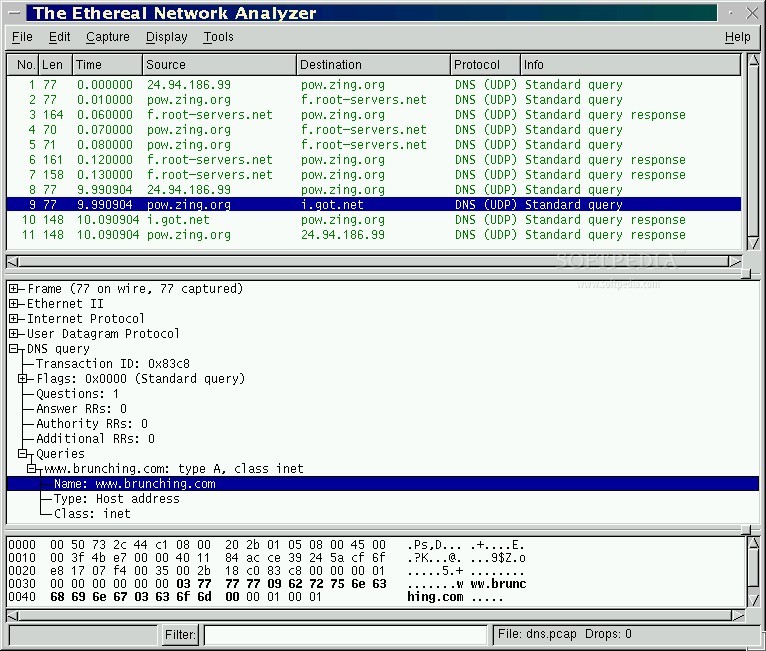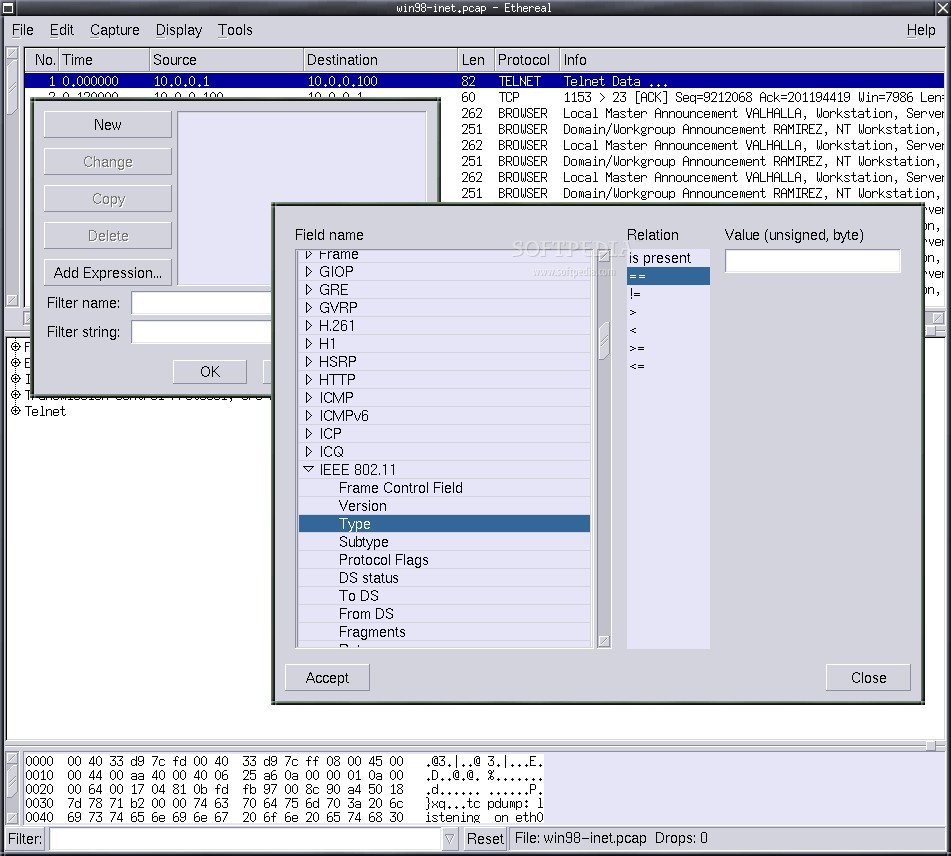
aaaaaa wrote a comment on GPS device with ESP32.aaaaaa wrote a comment on CH32V003 Mini Game Console.aaaaaa liked CH32V003 Mini Game Console.aaaaaa wrote a comment on CH552 USB Knob.Pedro Tomaz Alves liked TMS9918 VDP with SRAM video memory.Shakoor Baba wrote a comment on TAS5825M I2S Audio Amp.Sonny Supilanas has added a new log for Pi Radio Gateway.Wells on A Fresnel Lens Without The Pain.tmomas on A Fresnel Lens Without The Pain.johnrpm on Methane-Tracking Satellites Hunt For Nasty Greenhouse Gas Emissions.CRJEEA on A Fresnel Lens Without The Pain.Gerhard on Simulated ET To Phone Home From Mars This Afternoon.Joel on SMA Connector Footprint Design For Open Source RF Projects.Learn Linux with our beginner-friendly tutorials and examples.
LINUX WIRESHARK SOFTWARE
LINUX WIRESHARK CODE
Eventually he succeeded and was able to get the additional features he wanted supported in Linux - check out the final code in the GitHub repository if you’re curious what this looks like in Rust.Ĭapturing the USB communication with Wireshark seems generally a great way to port unsupported features to Linux, as we’ve seen earlier with an RGB keyboard and the VGA frame grabber that inspired it.
LINUX WIRESHARK HOW TO
How to actually make use of the captured data was an entirely different story though, and without documentation or much help from the vendor, resorted to good old trial and error to find out which byte does what. The go-to library for USB tasks would be libusb, which has bindings for plenty of languages, but as an avid Rust user, that choice was never really an issue anyway. Then it would simply be a matter of analyzing the captures and writing some Linux software to make sense of the data. His first step was to set up a dual boot system (his attempts at running the software in a VM didn’t go very well) which allowed him to capture the USB traffic with Wireshark and USBPcap. He thought it would be nice to have those features in Linux as well, and as the communication is done via USB, figured the obvious solution is to reverse engineer the protocol and simply replicate it. It didn’t technically require any operating system interaction to perform its main task, but things like settings adjustments or reading back statistics were only possible with Windows.

LINUX WIRESHARK FULL
-w − write the output to the file mycapture identifier.What can you do if you have a nice piece of hardware that kinda works out of the box, but doesn’t have support for your operating system to get the full functionality out of it? found himself in such a situation with a new all-in-one (AIO) water cooling system.-b files: − the number of files to capture before overwriting the oldest.-b filesize: − file size in kB before starting a new.-i − interface number (listed from dumpcap -D).# dumpcap -i 1 -b filesize:100000 -b files:20 -w mycapture.pcapng pcap files of 100MB each, replacing the oldest file with the twenty-first file and so on… This allows a continuous capture without exhausting disk space.

The following example will provide a ringbuffer capture. To see all dumpcap options, use the -h flag. Used in combination with tmux will allow the capture of packets in a detached session. Tcp.port=80||tcp.port=3306||tcp.port=443ĭumpcap is part of Wireshark and can be used for capturing packets without the GUI. This will filter traffic within any of the private network spaces. To only see LAN traffic and no internet traffic, run

If you want to see all the current UDP packets, type udp into the Filter bar or in the CLI, enter:

If you want to see all the current TCP packets, type tcp into the Filter bar or in the CLI, enter: For display filters, see wireshark-filter(4). Note: To learn the capture filter syntax, see pcap-filter(7).


 0 kommentar(er)
0 kommentar(er)
